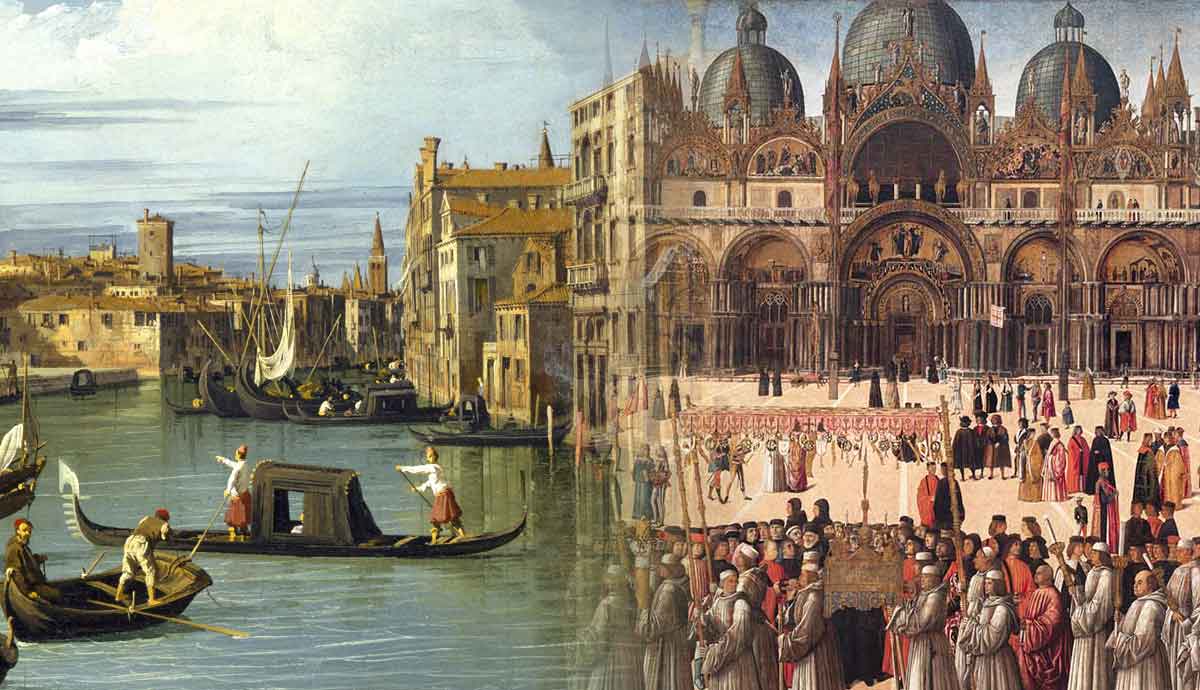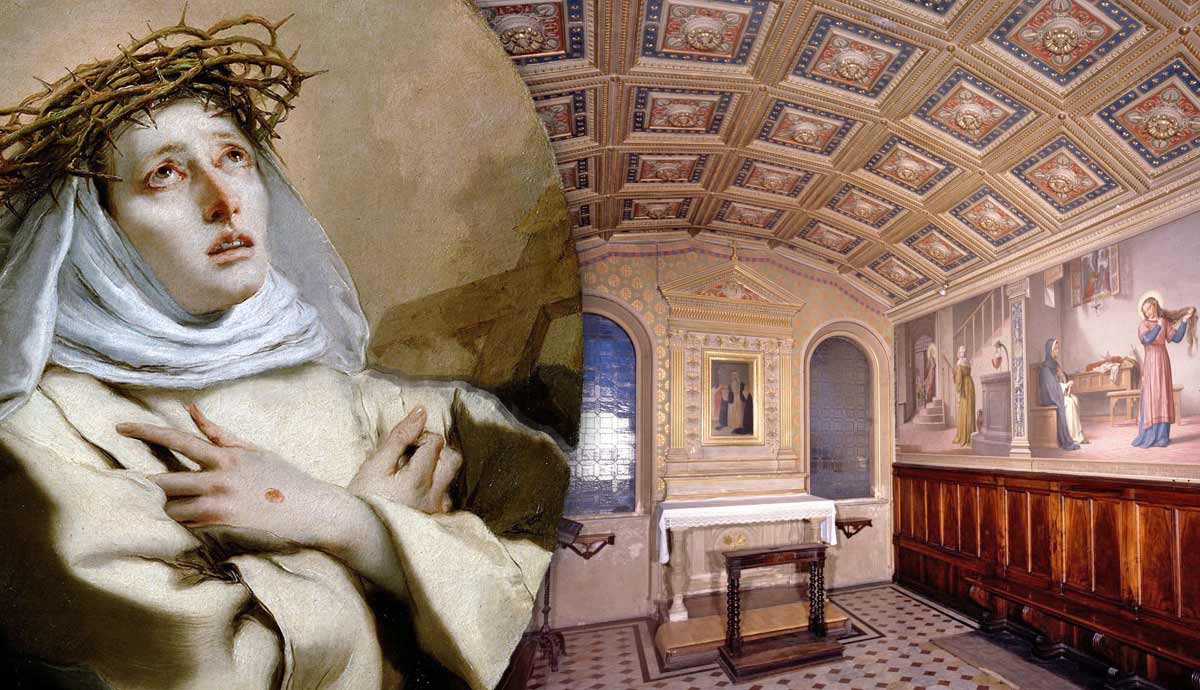
www.thecollector.com
The Central Powers vs. The Allies in World War I
On June 28, 1914, a Serbian nationalist assassinated Franz Ferdinand, the Archduke of Austria and heir to the throne of the Austro-Hungarian Empire. The event triggered a domino effect, with multiple countries declaring war based on their alliances. The conflict pitted two powerful and determined coalitions. The Central Powers of Germany, Austria-Hungary, and the Ottoman Empire faced off against the Allied nations of Britain, France, Italy, Russia, and the United States.
World War I Central Powers: Germany
German Kaiser Wilhelm II, 1905. Source: Wikimedia Commons/German Federal Archives, Koblenz
The German Empire led the Central Powers during World War I. However, the Germans did not directly initiate the conflict. Instead, Germany went to war through an alliance (known as the Triple Alliance, as it also included Italy) with Austria-Hungary. Germany had one of the largest militaries at the start of the war, with 4.5 million soldiers available, and it boasted a significant navy.
When the war began, Germany immediately went on the offensive. The German Empire felt itself surrounded and threatened by the alliance between Britain, France, and Russia. The first objective was to knock out archrival France rapidly.
German armies were successful in the first weeks of the war. They conquered most of Belgium and pushed into France. Closing in on Paris, a French counterattack finally stopped the advance. Fighting on the Western Front then bogged down into a war of attrition, with stagnant battle lines through trench warfare.
On the Eastern Front, Russia attacked Germany first, pushing into East Prussia in August 1914, while the bulk of German forces rushed into France in the west. Although Russian forces outnumbered the Germans, the Russians were slow and disorganized. Under General Paul von Hindenburg, the Germans surrounded and forced the surrender of one Russian army group and the retreat of another.
German infantry on the battlefield, photograph by Underwood and Underwood, c. 1917-1918. Source: Wikimedia Commons/US National Archives and Records Administration
Germany slowly advanced in the east. After the collapse of the Russian government, the new Bolshevik regime negotiated a peace treaty in 1918. The agreement gave Germany control of the Baltic, Poland, and Ukraine.
In East Africa, an expanded conflict took place between Germany and the Allies. While heavily outnumbered, German forces held off Allied attacks and continued fighting until the German surrender.
While Germany saw success in the East, it was short-lived. In June 1918, a new western German offensive reached within five miles of Paris before halting. The Allies launched a summer counteroffensive that pushed back German lines with heavy casualties, forcing total capitulation in November.
Austria-Hungary’s Role as a World War I Central Power
Franz Joseph I of Austria, 1908. Source: Wikimedia Commons/Library of Congress, Washington DC
The assassination of the Archduke of Austria set off the events of World War I, making Austria-Hungary the center of the conflict in the early days. Austria-Hungary quickly declared war on Serbia on July 28, 1914. Russia then declared war on the Austrian Habsburg Monarchy, which was backed (and encouraged to start the conflict) by Germany.
Despite being a key European power, the Austro-Hungarian Empire had several major weaknesses. As a multi-ethnic nation, the people of Austria-Hungary spoke many diverse languages, making it difficult to organize a cohesive military force. When the war broke out, the military was also less prepared and developed than other powers’ forces, particularly lacking in artillery and airplanes.
The main battlefronts for Austria-Hungary were Serbia, Italy, and Russia. Heavy fighting occurred on the Serbian front in 1914, causing many casualties. However, the Serbians repelled the larger Austro-Hungarian forces. German and Bulgarian assistance to their ally helped defeat and occupy Serbia in 1915.
An early battle in 1914 between Austria-Hungary and Russia was the Battle of Galicia, which caused an Austro-Hungarian retreat. Russia captured significant territory. With Germany’s help, the Central Powers went on the offensive against Russia in 1915. Russian forces retreated from the gains they had made earlier and continued to fall back.
Austro-Hungarian soldiers on the Isonzo Front, by unknown, September 10, 1917. Source: Wikimedia Commons
Four years of endless war wore down the fragile control of the Austro-Hungarian Empire. Encouraged by the Allies, various nationalities announced separation from the Empire in late 1918. This included Serbs, Croats, Slovenes, and Poles. Even Hungary declared separation from the empire. Austria and Germany proclaimed an association, but it was only a few days before the German surrender.
The Ottoman Empire as a World War I Central Power
Ottoman Sultan Mehmed V, by Bain News Service, 1914. Source: Wikimedia Commons/Library of Congress, Washington DC
By 1914, the Ottoman Empire was in steady decline, yet it remained a regional power in Eastern Europe and the Middle East. When World War I broke out, the Ottomans were friendly towards Germany but remained neutral for the first few months.
However, while performing joint Ottoman-German naval exercises in October 1914 on the Black Sea, German ships fired on the Russian coast. The Russians then declared war directly on the Ottomans and brought them into the Central Powers pact.
From the beginning of its entry into the war, the Ottoman Empire struggled to supply its military. Much of the equipment was outdated and of lower quality than their adversaries. Most of the fighting centered against the Russian Empire in the Caucasus region, east of the Black Sea. Ongoing skirmishes continued until Russia withdrew from the war in early 1918.
The most famous military event for the Ottomans was the Battle of Gallipoli. The Allies decided to attack the Gallipoli Peninsula in the Dardanelles, near Turkey. The aim was to weaken the Ottoman Empire, open a direct supply line to Russia, and create a new front in the war.
Ottoman cavalry in WWI. Source: Wikimedia Commons/National Library of Israel, Jerusalem
British and French attempts to sail through the Dardanelles failed in early 1915. Instead, the Allies prepared a land invasion. The Ottoman army was ready.
Ottoman troops holding higher ground gunned down Australia and New Zealand’s attempts to land at Gallipoli. However, the fighting soon turned into trench warfare-style tactics, much like on the Western Front. Staunch Ottoman defenses finally forced the Allies to abandon Gallipoli in 1916.
The Ottoman Empire collapsed following Germany’s surrender in November 1918. The Allies then partitioned the former empire, and in 1923, the Republic of Turkey emerged as independent.
World War I Allied Nations: Russia’s Role
Portrait of Russian Tsar Nicholas II. Source: Wikimedia Commons
Like several other countries, the Russian Empire was not prepared for war. Less industrialized than either Germany or Austria-Hungary, Russia was in economic and political turmoil in 1914. Yet a wave of patriotism propelled the nation to military conscription to support their Serbian allies.
Russia quickly went on the offensive against its main adversary, Germany. However, a lack of organization and adequate supplies rapidly reversed the tide of the war. Many Russian soldiers even went into battles without rifles.
Shortly after invading East Prussia in the summer of 1914, Russian troops had to retreat. By the autumn of 1915, Russia had lost 800,000 soldiers. In response, Tsar Nicholas II, with little military experience, made a fateful decision. He removed the army commander-in-chief and took over himself.
A Russian recruiting poster. The text reads: “World on Fire; Second Patriotic War,” 1917. Source: Wikimedia Commons
The situation continued to deteriorate, and many Russians blamed the tsar directly. Mass casualties led to labor and food shortages, resulting in growing demoralization and political unrest.
The Russian Brusilov Offensive in Galicia, from June to September 1916, against Germany and Austria-Hungary, led to some success and advances into enemy territory. However, extended Russian lines and expanded German reinforcements at the front turned the tide of battle, forcing another Russian retreat.
The February Revolution of 1917 led to Tsar Nicholas II’s abdication. The new provisional government tried to continue the war effort, but with little success. Later that year, the Bolsheviks seized power, promising to end Russia’s involvement in World War I.
In 1918, the Bolshevik government signed the Treaty of Brest-Litovsk with the Central Powers. The armistice ended Russia’s commitments to the Allies and finished their war effort. The deal restored peace, but the Russians lost significant territory and population in the deal, including much of their essential grain production.
World War I Allied Nations: France
Portrait of French President Raymond Poincare, photograph by Traumrune, 2022. Source: Wikimedia Commons
France faced the full force of German power on the front lines of the Western Front. The first few weeks of World War I witnessed German armies marching through Belgium and into French territory on their way to Paris. Germany’s strategy was to knock out the French, followed by the Russians and British.
France and Germany despised each other. France had lost its eastern territory of Alsace-Lorraine to the Germans in the 1870 Franco-Prussian War. The French saw the new conflict as an opportunity to recover the region.
The First Battle of the Marne, in September 1914, stopped the German advance and saved the French Republic. The Germans were just 30 miles from Paris when French commander Joseph Joffre launched a successful French and British counterattack.
Following the Marne, both sides raced towards the North Sea coast, trying to outflank each other. The result was hundreds of miles of trenches dug throughout northern France and part of Belgium that turned into a stalemate. Yet the war remained on French soil throughout, draining France both economically and psychologically.
Perhaps the most significant confrontation for France was the Battle of Verdun in 1916 in northern France. Verdun was also one of the largest battles of World War I on the Western Front. The German attack began on February 21. Germans seized fortified posts near the city. However, French reinforcements soon arrived, preventing Verdun from falling. The battle lasted over 300 days, with casualties of hundreds of thousands of men on both sides.
A group of French soldiers in Paris, c. 1914-1915. Source: Wikimedia Commons/Library of Congress, Washington DC
France fought the war in other geographic locations, such as Gallipoli and the Middle East. The Allied Nations and Central Powers signed the Treaty of Versailles, officially ending the war, in Paris in 1919. In the agreement, France took possession of Alsace-Lorraine.
Britain as a World War I Allied Nation
British Prime Minister David Lloyd George, by A. & R. Annan & Sons, 1915. Source: Wikimedia Commons/The New York Times Current History: The European War
The German invasion of Belgium and France brought Great Britain into the war. Britain promised to protect Belgian independence and already had an alliance with France. Britain had the largest empire but the smallest regular army among the major combatants. However, the massive British Navy dominated the seas.
The British Expeditionary Force (BEF) was dispatched to France and saw action immediately. British forces included Dominion and Colonial troops throughout the empire. These troops saw action in most battles and on many fronts.
One significant clash involving British troops came in April and May at the Second Battle of Ypres in Belgium. This is where Germany first launched poisonous gas against Allied lines. Canadian and Indian soldiers fighting under the British flag took the brunt of the attack. Though casualties were high, the British-led forces held the line.
The Battle of the Somme lasted from July to November 1916 and became one of the bloodiest battles in history. The Allies planned a decisive offensive, but the Germans were prepared for the assault. On the first day alone, 20,000 British and Empire soldiers died in battle. By the end of the battle, the Allies had gained a total of six miles and suffered 600,000 casualties.
Men of the Notts and Derby Regiment marching along the Amiens-St. Quentin Road, from Foucancourt, near Brie, Somme, March 1917. Source: Wikimedia Commons/Imperial War Museum, London
Britain actively participated in the failed attack on the Ottoman Empire at Gallipoli. However, British troops made gains by taking Ottoman territories in the Middle East.
The navy saw much action in the war. British ships blockaded German coastal areas. They also worked to protect Allied shipping from German U-boat (submarine) attacks. The Battle of Jutland saw a direct encounter between large British and German dreadnoughts. Although the battle was indecisive, Britain maintained its overall naval superiority.
The United States in World War I as an Allied Nation
American President Woodrow Wilson, by Harris & Ewing, 1914. Source: Wikimedia Commons/Cowan’s Auctions
In 1914, most Americans supported the Allied nations but still wanted to stay out of the war in Europe. President Woodrow Wilson agreed and maintained strict neutrality. Then came the sinking of the RMS Lusitania.
In May 1915, a German U-boat torpedo sank the British passenger ship RMS Lusitania. One thousand two hundred passengers died, including 128 Americans. Resentment against Germany grew. As a response, the German government temporarily backed off on unrestricted attacks on Allied shipping.
The status quo held, and Wilson was re-elected on a neutrality platform in 1916. However, in 1917, Germany resumed open attacks on Allied ships in an increased effort to win the war. Then, revelations of a secret German telegraph urging the Mexican government to attack the United States emerged. On April 6, 1917, America declared war.
Within months, the United States was sending massive supplies of material and personnel across the Atlantic Ocean. In early 1918, American troops finally went into battle, helping to turn the tide of the war.
American soldiers celebrate Armistice, by Cassowary Colorizations, 2018. Source: Wikimedia Commons
The German Spring Offensive launched on March 21, 1918. Fresh American forces helped the weary Allies repel the assault and prepare for a counterattack.
The American Expeditionary Force played a key role in the Allied “Hundred Days Offensive” in the autumn of 1918. On September 26, the United States launched the Meuse-Argonne Offensive. In a little over a month, 1.2 million Americans drove the Germans back 40 miles.
The United States was actively involved in post-war talks. President Wilson pushed for a world body to resolve future conflicts as part of the Treaty of Versailles. However, the US Senate refused to ratify the deal, keeping America isolated and out of the new League of Nations.
Italy in World War I: From a Central Power to an Allied Nation
Official portrait of King Victor Emmanuel III of Italy in uniform, by Mario Nunes Vais, 1918. Source: Wikimedia Commons
Italy joined the Central Power alliance between Germany and Austria-Hungary in 1882. The coalition made geographical and political sense, as Italy worried about a potential attack from France in the West. Still, the Italian government decided to remain neutral when World War I broke out, claiming it was not under obligation to provide military assistance for Germany’s offensive military actions.
Despite their alliance, much political friction continued between Italy and the Austro-Hungarian Empire. In particular, Italy wanted to annex Italian-speaking populations within the empire. Britain and France promised to support Italian annexation if the Italians joined the Allies. On May 23, 1915, Italy declared war on Austria-Hungary.
Italian troops firing on Austro-Hungarian positions, photograph by an Italian Army photographer. Source: Wikimedia Commons
Numerous actions occurred, but three major campaigns dominated the Italian Front. The Battle of the Isonzo was one of twelve smaller skirmishes from 1915 to 1917. Italy initiated most of the attacks but made little progress against Austro-Hungarian defenders in the mountainous and watery terrain.
The final campaign in the Battle of the Isonzo became known as the Battle of Caporetto. By the fall of 1917, both sides were exhausted. However, Germany sent troops to reinforce the Austro-Hungarian line. Poisonous gas attacks caused the Italian forces to retreat more than 90 miles with heavy losses. Overextended supply lines ended the offensive after several weeks.
Italy launched a new offensive in October 1918, known as the Battle of Vittorio Veneto. It was a decisive victory. Troops pushed the Central Powers out of Italian territory and into Austria-Hungary. The fighting continued as the empire collapsed, leading to an Austrian surrender on November 3.
Italy incorporated some of the territories of the former Austro-Hungarian Empire. However, many Italians, especially nationalists, felt they should have taken more land after the long war. The idea that WWI led to a “mutilated victory” was one of the factors leading to the rise of nationalism and fascism in the 1920s.
Other nations besides the major powers listed were involved in the Great War. Bulgaria fought with the Central Powers. Dozens of countries and dominions fought on the Allied side. Japan battled German outposts in the Pacific region. The colonies of Britain and France sacrificed their populations in the Allied war effort, many hoping their struggles would lead them to independence.















